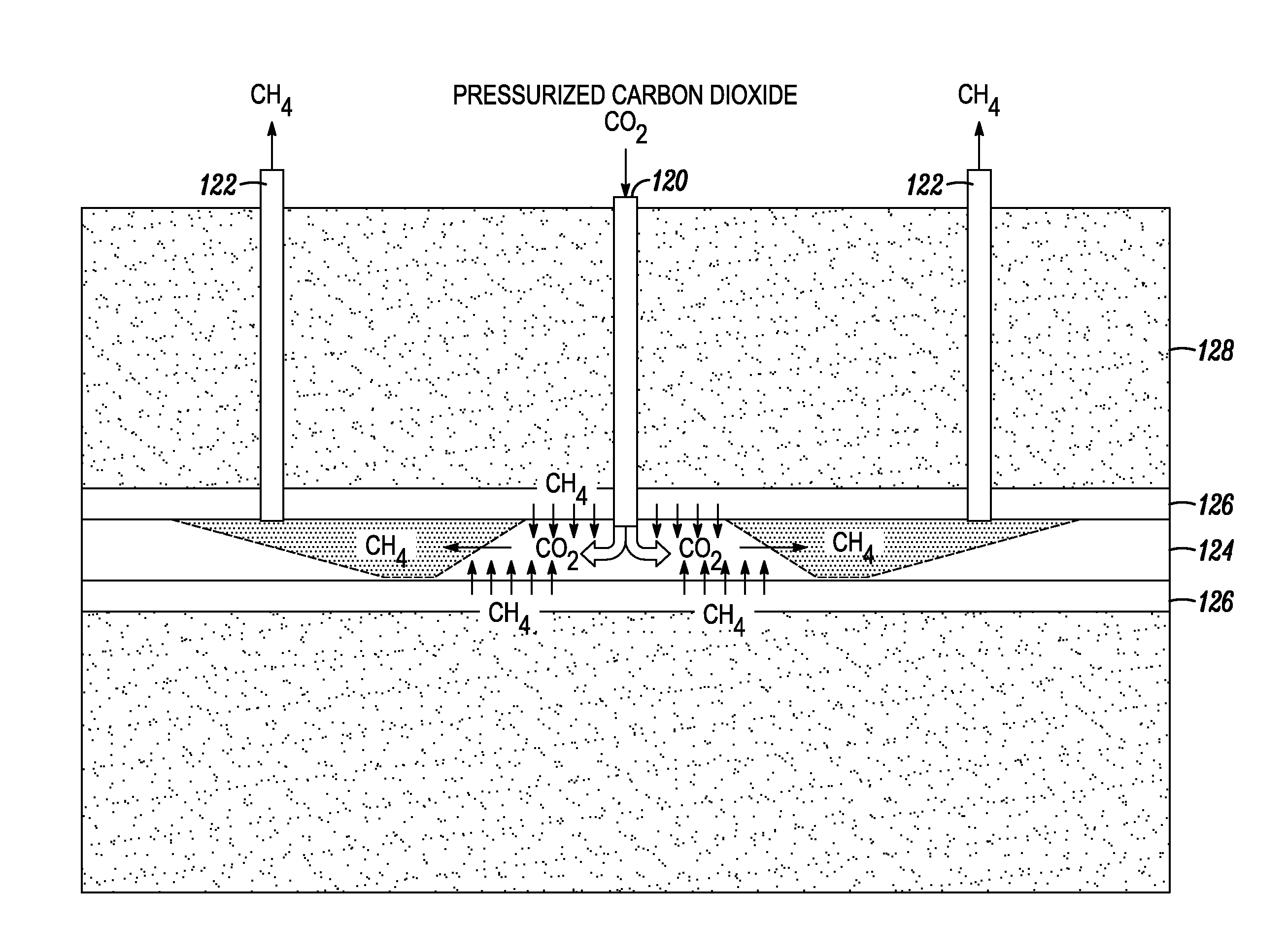Method and apparatus for using pressure cycling and cold liquid co2 for releasing natural gas from coal and shale formations
- Summary
- Abstract
- Description
- Claims
- Application Information
AI Technical Summary
Benefits of technology
Problems solved by technology
Method used
Image
Examples
Embodiment Construction
[0131]The proposed approach preferably comprises capturing, pressurizing, chilling and liquefying the CO2 effluent from a coal fired power plant, incinerator or chemical processing plant and then introducing the pressurized CO2 in liquid form (LCO2) into a coal stratum or a gas shale stratum that will sequester the LCO2. There will also be natural gas recovered from the site including after the CO2 has been adsorbed into the coal or shale and natural gas has been released therefrom, which can be sold to offset the cost of sequestering the CO2. If these strata are located adjacent to the power plant, the LCO2 is preferably directly inserted into the strata. If these strata are located a distance from the power plant, the captured CO2 is preferably collected onto a truck trailer or into a pipeline, etc., for transport to the strata site. In either case, natural gas can be recovered for sale.
[0132]Separation of carbon dioxide gas (CO2) from the flue gases of a power plant, incinerator ...
PUM
 Login to View More
Login to View More Abstract
Description
Claims
Application Information
 Login to View More
Login to View More - R&D
- Intellectual Property
- Life Sciences
- Materials
- Tech Scout
- Unparalleled Data Quality
- Higher Quality Content
- 60% Fewer Hallucinations
Browse by: Latest US Patents, China's latest patents, Technical Efficacy Thesaurus, Application Domain, Technology Topic, Popular Technical Reports.
© 2025 PatSnap. All rights reserved.Legal|Privacy policy|Modern Slavery Act Transparency Statement|Sitemap|About US| Contact US: help@patsnap.com



